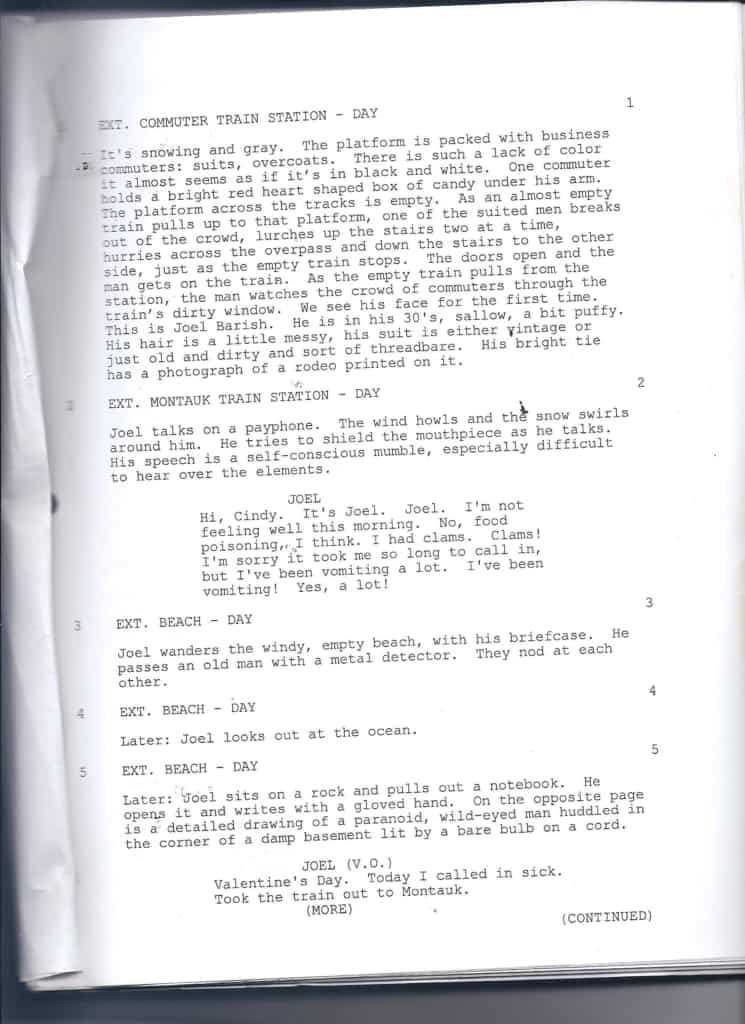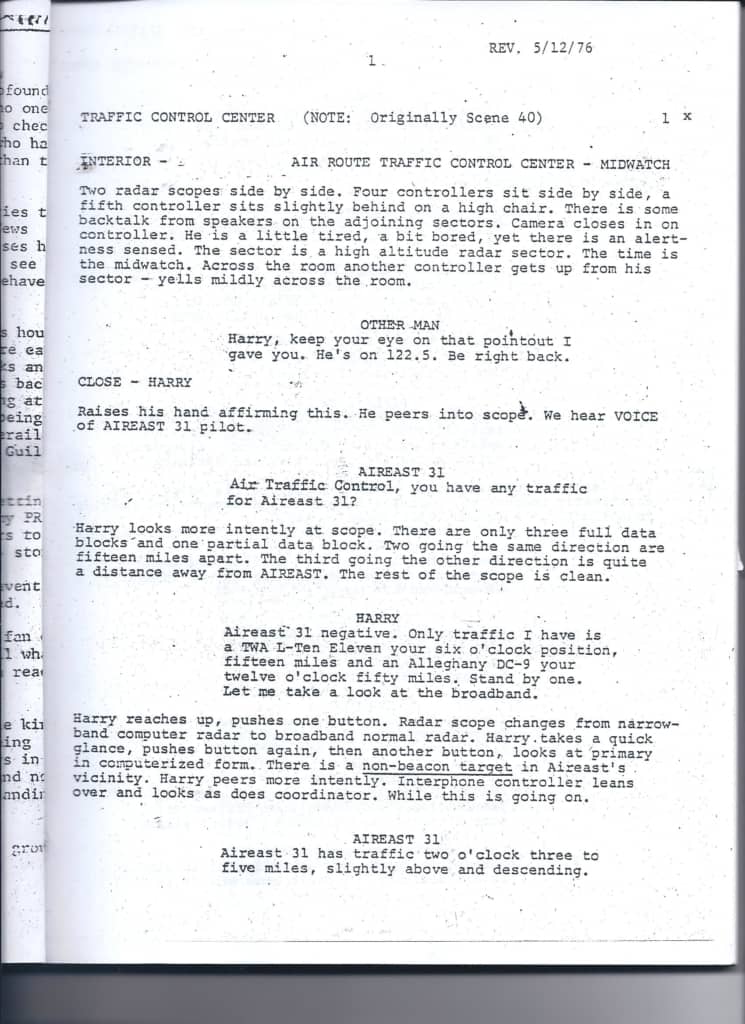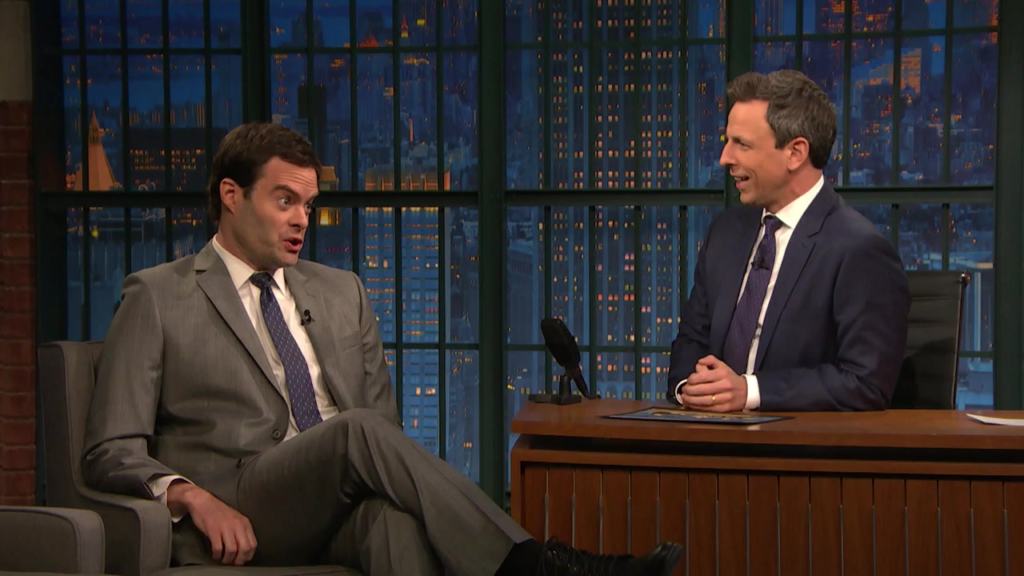It’s not about the words.
And it’s not even the most wonderful thing in the movie.
That would be the performance of Elizabeth Perkins.
It’s not about the words.
And it’s not even the most wonderful thing in the movie.
That would be the performance of Elizabeth Perkins.

Here’s the first page of Eternal Sunshine of the Spotless Mind. The brilliant Charlie Kaufman breaks at least two rules here: (1) starts with a block of action description that is 16 lines long (any more than four and everyone will know you’re an amateur!), (2) tells us what is printed on his tie (not the writer’s business!), and (3) introduces a voiceover to tell us what is happening (verboten!).
What I love most about this is the quick start. We meet Joel right away. We know that something is amiss. We know it’s Valentine’s Day. But we want to know even more. He’s lying to his co-worker, right? Why is this seemingly reclusive man going to the beach? You could argue that the rest of the movie sets out to answer that question for the audience.
This is the first in a series of posts where I’ll post the first page from the screenplay of a movie I love. And we’ll see what we can learn.

One of my screenwriting teachers turned me onto this idea of impressive failure as an important tool in getting your audience to bond with the protagonist of your film. Think of Luke Skywalker and all the ways he fails in the first hour of Star Wars…
When we watch a character try so hard and fail, over and over, we are increasingly bonded to that character. We desperately want them to succeed. This often works even when the character is trying to achieve some goal that we would normally find reprehensible. And thus we often find ourselves rooting for gangsters and bank robbers.
It recently occurred to me that the same kind of thing goes on in parenting. You spend so much time watching your child try and fail to do the most basic tasks. Rolling over, grabbing a pacifier, sitting up, crawling, walking. There are hours and hours of attempts before it actually works. And with every failed attempt, you feel more and more bonded to this little human.

I *love* this kind of movie open where we start with men at work, and then something out-of-the-ordinary pops up. (See James Cameron’s The Abyss or even United 93 for other examples of men-at-work opens.)
Note that this was originally Scene 40 and they moved it up to the very beginning. It’s the first thing we see.
Spielberg — he not only directed but also wrote the screenplay — captures the banality of the workplace. The air traffic controller is “a bit bored,” and his colleague yells at him “mildly.”
Spielberg isn’t afraid to get a little bit technical. He uses words that the typical reader won’t understand… midwatch, data block, non-beacon target.
And that mention of the non-beacon target. It’s underlined. If you want to get technical, this is the inciting incident. Or — at least — it’s the very start of the inciting incident. The moment when the status quo — the boredom of a nighttime air traffic control shift — is interrupted by the unexpected.
And no one says a thing.
Spielberg shows us the importance of this blip with the physical movement of three characters: “Harry peers more intently. Interphone controller leans over and looks, as does coordinator.”
And the audience wonders, “What the heck are they so curious about?”
He’s already got us, and we’re still on page 1.

I recently discovered that this phrase — “putting a hat on a hat” — has two completely different meanings, one in comedy and one in football.
Here Bill Hader learns from Seth Myers what it means to put a hat on a hat (layering one joke on top of another to ill effect).
And, below, former tight end Cam Cleeland explains how an offense lines up against a defense, putting a hat on a hat (blocking each defender with a single offensive player):